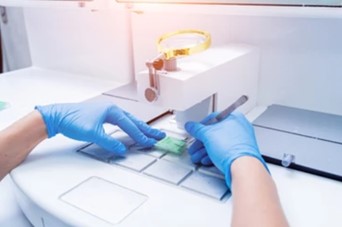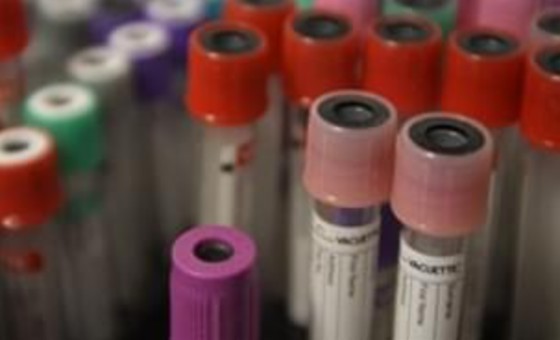Embedding & Blocking Out Protocol
GUIDELINE
Embedding is to remove the fixed, dehydrated, transparent and wax-soaked tissue blocks from the final wax bath and place them into the embedding frame filled with molten paraffin wax. Embedding into blocks enables the tissue and embedding agent to be fused together and cooled rapidly. This procedure is called embedding.
METHODS
- After the tissue is immersed in paraffin, the tissue is moved into the paraffin cup for embedding before embedding. Take it out of the incubator and place it on a tripod, under which an alcohol lamp is lit to keep the paraffin dissolved.
- Prepare the embedding frame. After heating the embedding lens on the alcohol lamp (to prevent the lens from sticking to wax), hold the wax cup with your left hand, and put the warming lens on the wax mouth (upright) with your right hand to pour the wax into the embedding frame along the lens.

- Quickly take the tissue blocks and put them into the embedded paraffin frame. Put them into the bottom of the frame with the cut side down and gently flatten them to ensure that there are no more bubbles.
- Before the paraffin surface solidifies, attach the label to it, and pay attention not to confuse the label with the specimen. When the wax block is cold until there is a transparent wax film on the wax surface, immerse it in cold water to cool it quickly, otherwise crystallization is often formed in the wax.
- Remove the copper frame after the wax block is completely hardened to ensure that the wax is thoroughly solidified. Immediately trim and prepare to be sliced or stored for later use.
NOTES
- The paraffin used as the embedded tissue not only needs to be selected due to the different climate, but also has a close relationship with the hardness of the tissue. The best hard tissue is embedded in paraffin with higher hardness, on the contrary, the soft tissue should be embedded in paraffin with lower hardness. Its melting point is generally required to be about 60°C.
- The temperature of embedded paraffin wax should not be too high to keep its non-solidification. Too high temperature is easy to burn the tissue, make the tissue hard, brittle, curl, shrink and deformation, which is not conducive to section, and even affect the diagnosis. In addition, pay attention to the temperature of the buried wax and the temperature of the tissue itself, whether the two are appropriate, the temperature inconsistency can often cause the phenomenon of paraffin detachment between the tissue and the surrounding, and cannot reach the role of embedding.
- In embedding, it should be noted that the diseased surface of the tissue should be placed below, and the tissue should be flattened as far as possible. In the case of no damage to the tissue, the camera can be used for light pressure.
- More attention should be paid to the orientation of the tissue during the embedding of the cyst wall and digestive tract, and the tissue blocks should be straightened upright and not curled.
- When the same tissue is embedded in a wax block, in addition to the wrapping, attention should be paid to the same direction to facilitate the section. When multiple tissues and broken tissues are embedded in a wax block, the arrangement of tissues must be tightly crowded to form straight or square rows, which is conducive to section.
- After paraffin embedding, condensation should not be too slow, especially when the room temperature is high. After paraffin solidifying, it should be immediately put into cold water to accelerate cooling, which can increase the density, toughness and hardness of paraffin. But too fast condensation will also cause the wax block to crack due to the large temperature difference between inside and outside.
